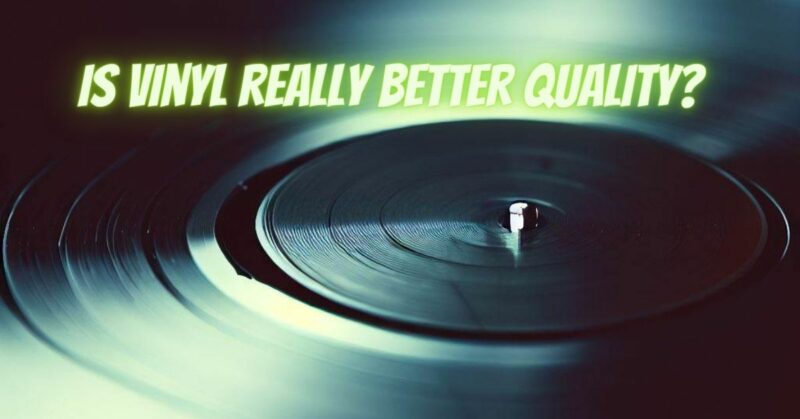Vinyl records have seen a remarkable resurgence in recent years, drawing music enthusiasts and audiophiles back into the world of analog sound. The debate over whether vinyl offers superior audio quality compared to digital formats is a topic of ongoing discussion among music lovers. In this article, we will examine the various aspects of vinyl’s audio quality and consider whether it genuinely delivers a superior listening experience.
Vinyl’s Unique Appeal
To address the question of vinyl’s audio quality, it’s crucial to acknowledge the unique qualities and characteristics that make vinyl records stand out:
- Analog Warmth: Vinyl records are celebrated for their warm and organic sound. The analog nature of vinyl captures subtle nuances and harmonics, providing a distinct listening experience that many find appealing.
- Tactile Engagement: Playing a vinyl record is a tactile experience. Handling the record, placing it on the turntable, and carefully lowering the stylus create a sense of connection with the music, adding to the overall enjoyment.
- Album Artwork: Vinyl records often feature elaborate album artwork, lyric inserts, and other artistic elements that enhance the overall experience. The physicality of vinyl adds an extra layer of appreciation for the music and the artistry behind it.
- Nostalgia and Collectibility: Vinyl records hold a deep sense of nostalgia for many. They evoke memories of a time when music was enjoyed differently, and the act of collecting and playing records was a cherished hobby. This emotional connection is a vital aspect of vinyl’s appeal.
However, these unique characteristics are separate from the technical aspects of audio quality, and vinyl records also come with inherent limitations.
The Technical Realities of Vinyl
While vinyl records offer a distinct and cherished listening experience, they come with several technical limitations that can affect audio quality:
- Surface Noise: Vinyl records can produce surface noise, including crackles, pops, and hisses. This noise is an inherent characteristic of the format and can vary based on the condition of the record and the playback equipment.
- Limited Dynamic Range: Vinyl records have limited dynamic range compared to high-resolution digital formats. This limitation can affect the ability to reproduce very soft and very loud sounds accurately.
- Physical Degradation: Vinyl records are susceptible to physical wear and damage over time. Scratches, dust, and groove wear can impact playback quality.
- Frequency Response: Vinyl records may exhibit frequency response limitations, with high-frequency content gradually attenuating as the stylus moves towards the center of the record.
- Playback Equipment: The quality of the turntable, tonearm, cartridge, and other playback components can significantly impact the sound quality of vinyl records.
The Subjectivity of Audio Quality
Audio quality is a highly subjective matter, and personal preferences play a significant role in determining whether vinyl is perceived as better quality. Some listeners genuinely appreciate the unique characteristics of vinyl and find its analog warmth and imperfections appealing. Others may prefer the technical precision and convenience of digital formats.
Ultimately, whether vinyl is considered better quality is a matter of personal taste. It offers a unique listening experience that many find captivating and enjoyable. However, it’s important to recognize that vinyl’s appeal extends beyond mere technical fidelity, and its audio quality is inseparable from the subjective and emotional aspects of music appreciation.


